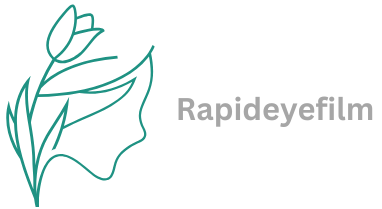Table of Contents
ToggleIn a world where emojis often replace words and autocorrect turns “I love you” into “I loathe you,” mastering a language can feel like climbing Mount Everest in flip-flops. But fear not! Language trainers are here to help navigate this whimsical journey. Whether you’re teaching a class of eager learners or just trying to keep your sanity while explaining the difference between “there,” “their,” and “they’re,” some expert tips can make all the difference.
Understanding the Role of a Language Trainer
Language trainers play a crucial role in helping learners overcome communication challenges. They guide individuals through the complexities of language, ensuring effective learning.
Importance of Language Trainers
Language trainers support students in building essential language skills. They provide tailored instruction that meets specific learner needs. Effective trainers help demystify rules and structures, allowing learners to express themselves confidently. By offering constructive feedback, trainers create a safe environment for experimentation. Moreover, they motivate students to engage with the language, enhancing retention. The personalized approach of trainers fosters a deeper understanding of the language.
Key Skills for Effective Training
Effective language trainers possess several key skills. Strong communication abilities enable them to convey information clearly. They also demonstrate cultural sensitivity, recognizing the diverse backgrounds of learners. Adaptability plays a vital role; trainers adjust lesson plans based on learner progress. Patience is essential as it encourages learners to ask questions without hesitation. Additionally, creativity in lesson delivery keeps students engaged and interested. Lastly, strong organizational skills help trainers manage course materials efficiently.
Essential Language Trainer Tips
Effective language trainers enhance learning experiences through targeted strategies. They adopt methods that cater to individual needs, enabling smoother progress.
Creating Engaging Lesson Plans
Lesson plans should stimulate interest and participation. Start with clearly defined objectives that outline what learners will achieve. Incorporate interactive activities such as role-plays and group discussions. Variety in lesson formats keeps students engaged, whether through multimedia presentations or hands-on exercises. Consider including real-life scenarios to apply language skills practically. Lastly, routinely evaluate the effectiveness of lesson plans, making necessary adjustments based on student feedback.
Utilizing Technology in Training
Technology plays a significant role in modern language training. Incorporating language learning apps can complement traditional methods. Use online resources such as videos and podcasts to expose learners to native pronunciation and cultural context. Interactive platforms foster collaboration among students, enhancing their communication skills. Trainers can also utilize virtual classrooms for remote learning, ensuring accessibility for diverse learners. Lastly, regularly update technological tools to maintain relevance in an evolving digital landscape.
Strategies for Student Engagement
Effective engagement strategies elevate the learning experience, fostering both confidence and enthusiasm among language learners. Prioritizing a supportive atmosphere encourages students to explore and practice new language skills.
Building a Positive Learning Environment
Creating a positive learning environment involves establishing clear expectations for student behavior. This approach includes adaptable seating arrangements that promote interaction. Appreciation of diverse backgrounds cultivates a sense of belonging. Incorporating positive reinforcement boosts students’ motivation and self-esteem. Encouragement during moments of challenge reflects understanding and support. Regular feedback helps learners comprehend their progress and areas for improvement.
Encouraging Interactive Learning
Interactive learning techniques enhance student participation and retention. Incorporating group work allows learners to collaborate and practice conversational skills. Role-playing exercises simulate real-life scenarios, making language use relevant and practical. Using games engages students while promoting competition and teamwork. Digital tools streamline interaction, providing access to online discussions and collaborative projects. Asking open-ended questions stimulates critical thinking and applies newly learned vocabulary.
Assessing Progress and Providing Feedback
Assessment and feedback serve crucial roles in language training. These processes enable trainers to monitor learner progress and make necessary adjustments.
Formative vs. Summative Assessment
Formative assessments occur throughout the learning process. They include quizzes, discussions, and informal observations meant to gauge understanding in real-time. Summative assessments typically take place at the end of a learning unit. These assessments, like final exams or projects, evaluate overall language proficiency and retention. Both types of assessments offer valuable insights. Formative assessments guide immediate instructional changes, while summative assessments provide a comprehensive view of a learner’s progress.
Techniques for Constructive Feedback
Providing constructive feedback requires clarity and specificity. Trainers should utilize the “sandwich” method, starting with positive comments, addressing areas for improvement, and concluding with encouragement. Timeliness is vital; feedback given shortly after an activity remains fresh in the learner’s mind. Encouraging self-reflection can lead to personal growth. Asking learners how they feel about their performance fosters a deeper understanding of their strengths and weaknesses. Through these techniques, trainers can ensure feedback contributes effectively to ongoing development.
Continuing Professional Development for Language Trainers
Continuing professional development is essential for language trainers. Staying updated with new methodologies and resources can enhance teaching effectiveness.
Resources for Language Trainers
Numerous resources exist to support language trainers in their professional growth. Online platforms provide access to webinars, courses, and forums designed specifically for language educators. Relevant publications, such as journals and blogs, offer insights into recent trends and research findings. Workshops conducted by experienced trainers can furnish practical skills and innovative techniques. Utilizing these resources helps trainers refine their expertise while adapting to the evolving landscape of language education.
Networking and Collaborating with Peers
Connecting with peers fosters professional growth and collaboration. Attending conferences encourages sharing best practices and gaining fresh perspectives. Local or online language trainer groups provide platforms for exchanging ideas and resources. Engaging in collaborative projects with fellow trainers enhances exposure to diverse teaching approaches and methodologies. Building a network also offers support during challenges, helping trainers stay motivated and inspired.
Language trainers play a pivotal role in navigating the complexities of modern communication. By employing effective strategies and fostering a supportive learning environment, they empower students to build confidence and proficiency. The integration of technology and interactive methods enhances engagement and retention, making the learning experience more enjoyable.
Continuous professional development ensures trainers remain effective and adaptable to evolving methodologies. By embracing collaboration and sharing insights with peers, they not only enrich their own teaching practices but also contribute to the broader language learning community. Ultimately, the dedication of language trainers significantly impacts the success of their students in mastering a new language.




